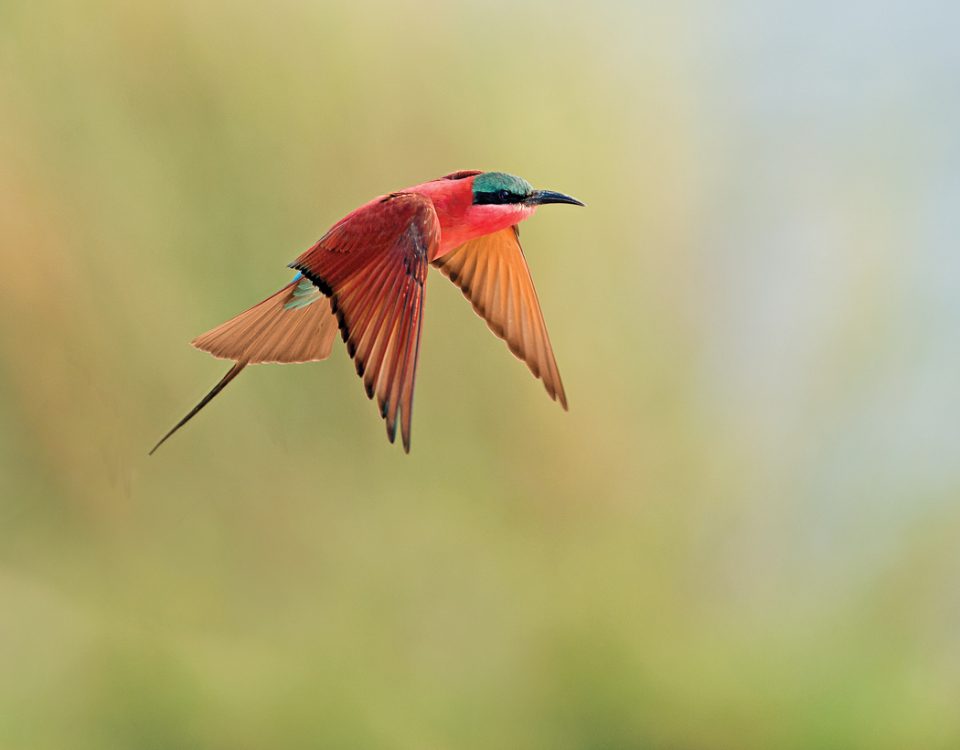A new Kaiser for Swakopmund
June 12, 2013Have children? Will travel to Namibia
June 12, 2013Text and photographs Pompie Burger
Main photograph: Giant Eagle Owls use their bills to regurgitate indigestable food pellets. Photo ©Pompie Burger
Eating, drinking, backbiting, fighting and shouting are all part of Namibian culture. In this respect our birds don’t differ much from us who live here, since humans and birds can both justifiably be described as having ‘meer bek as binnegoed’ (Afrikaans for more mouth than intestines).
Interestingly enough, there are several proverbs in the Afrikaans language that refer to mouths, bills and beaks.
A few apt ones are bek-af (down in the mouth); so ‘n bek moet jam kry (such a big-mouthed individual deserves jam); hy rek sy bek (he has a lot to say); in die bek ruk (to scold someone forcefully);
The red tip of the lower mandible of Kelp Gulls may serve as a guiding beacon to the youngsters when being fed Photo©Pompie Burger
‘n bek vol tande (a mouth full of teeth, but the owner doesn’t necessarily have anything to say); gladde bek (smooth talker); nie op die bek geval nie (not being short of words); grootbek (braggart); hou jou bek! (shut up!);

The long slender bill of the Scarlet-chested Sunbird has a serated tip to saw into the corolla of a flower. Photo ©Pompie Burger
meer bek as binnegoed (describing a big bluffer); dik bek (sulking); droëbek (having a dry mouth); oopmond (open-mouthed), bitterbek (a bitter person), foul-mouthed (referring to an individual who uses foul language); uit die mond van ‘n suigeling (from the mouth of babes); jou mond uitspoel (rinsing your mouth because you’ve used foul language); dit maak my mond water (it makes my mouth water).

This Lesser Striped Swallow does not only use feathers for disguising itself but also for finishing touches to its nest. Photo ©Pompie Burger.
The anatomy of a bird differs from that of other animals insofar as birds have no teeth and their tongues are different (as in thinner to fit into their beaks). Otherwise birds are rather similar to humans, inter alia having nasal bristles, albeit for different reasons.
Many birds are named after the shape of their bill (spoonbill, openbill, sheathbill, trumpeter, broadbill, shoebill, saddle-billed, thick-billed, knob-billed, slender-billed, scimitar-billed, sharp-billed); the size of their bill (long-billed, broadbill) or its colour (red-billed, yellow-billed, blue-billed, pink-billed). Humans are given names for similar reasons, as in Old Bluebill should stop smoking, Little Openbill is really struggling at school, and so on.

A Chestnut Weaver male doing some weaving and knitting in preparing a home for his future wife. Photo ©Pompie Burger.
Functionally the activities of birds and men are many and varied, ranging from basic: eating, drinking, feeding, singing and calling, to more elaborate, such as kissing, climbing, skimming, probing, catching, tearing, ripping, preening, mating, pecking, grooming, hammering, sucking, fighting, building, knitting, carrying, fishing, killing, combing, desalinating, searching, vomiting and sifting.
Birds of Namibia, published by Venture Publications in 2008, features the superb photography of Pompie Burger – an orthopaedic surgeon based in Windhoek who has a passion for photography and wildlife, especially birds, which regularly takes him to the most remote parts of the country. The versatile Pompie also wrote the text in his own distinctive, idiosyncratic and often hilarious writing style. Read more of his stories on our website in the Birding Section.

